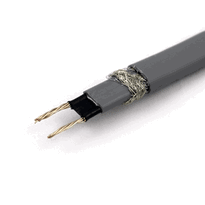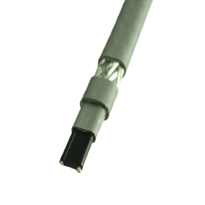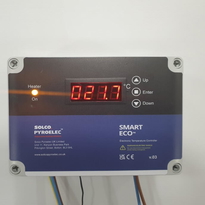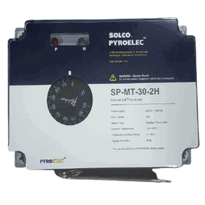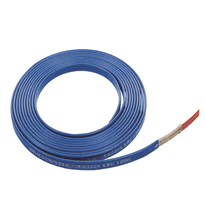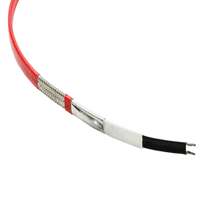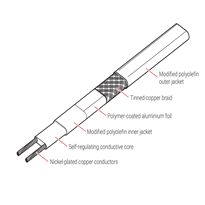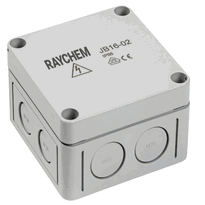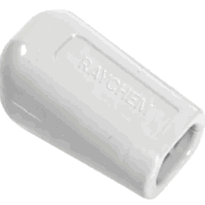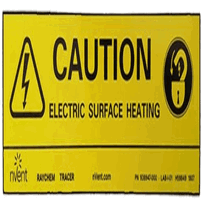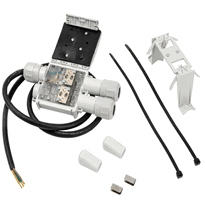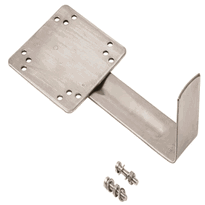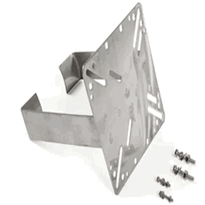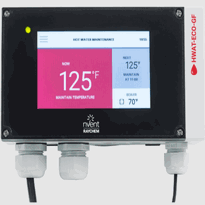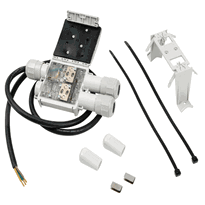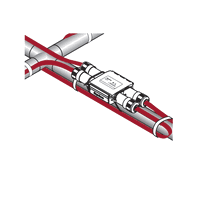Heat Trace on Pex Pipe
Heat tracing on PEX pipes requires selecting systems compatible with cross-linked polyethylene materials, following the manufacturer’s specifications, and complying with electrical safety standards. Use self-regulating or constant-wattage heat tapes that are approved for plastic piping, ensuring proper installation with secure wrapping and insulation. Precautions include avoiding high heat sources, utilizing appropriate fasteners, and conducting electrical connections carefully. Maintaining system integrity involves regular inspections, verifying thermostat operation, and ensuring insulation remains effective. Further details assist in ensuring suitable application and long-term performance.
Understanding PEX Pipe Compatibility With Heat Tracing Systems
Gaining a clear understanding of how PEX pipes interact with heat tracing systems is vital for ensuring reliable and safe freeze protection in both residential and commercial settings. PEX pipes generally tolerate heat tracing well, provided that manufacturers' guidelines are meticulously followed. PEX pipe composition uses cross-linked polyethylene, which can withstand moderate heat application without deforming or deteriorating, making it suitable for many heat tracing solutions. However, not all types of heat tapes are suitable for use with PEX. Adhesive-backed heat tapes, for example, can pose risks of damage through direct contact with PEX pipes, such as deformation or deterioration. Therefore, it's essential to consult the pipe manufacturer for specific recommendations or approvals before installation. Additionally, understanding the thermal tolerance of PEX pipes helps in selecting the correct heat tracing solutions to prevent damage from excessive heat exposure. This not only helps in maintaining the integrity of the pipe but also ensures that warranty and safety standards remain intact. Factors such as the diameter of the PEX pipe, its flexibility, and its wall thickness play a significant role when selecting the appropriate heat tracing solution. Proper installation techniques should be employed to prevent overheating, which can weaken or deform the pipe material. Overheating can be caused by excessive heat tape length, inadequate insulation, or incorrect application methods.
Careful adherence to the manufacturer’s instructions and technical specifications is critical for achieving optimal and safe performance. This cautious approach helps minimize the risk of damage, ensuring that the system functions reliably throughout its service life. Manufacturers’ guidelines often specify temperature limits to prevent damage to both PEX pipes and the heat tape systems, highlighting the importance of following recommended settings. When in doubt, seeking professional guidance or manufacturer support is advisable to ensure compatibility and safety.
Types of Heat Tapes Suitable for PEX Pipes
Various types of heat tapes are suitable for use with PEX pipes, provided that their specific characteristics align with the requirements for safe and effective heat tracing. Self-regulating heat tapes automatically adjust their heat output based on ambient temperature, increasing energy efficiency and reducing the risk of overheating. They're compatible with PEX pipes when proper considerations are made, such as avoiding harmful adhesives and ensuring appropriate thermal dissipation. Manufacturers generally support the use of self-regulating tapes on plastic piping, making them a flexible option for various applications. Constant-wattage heat tapes maintain a steady level of heat regardless of environmental changes, making them suitable for long pipe runs or extremely cold conditions, though they may consume more energy. Both types can be effectively utilized with PEX pipes when installation guidelines are followed, emphasising material compatibility and safety precautions. For optimal performance, it's important to consider the insulation of piping systems and the thermal properties of the materials used. Selecting the appropriate heat tape depends on specific climate conditions, pipe length, and resource considerations.
Proper Installation Techniques for Heat Trace on PEX Pipes
Proper installation of heat trace on PEX pipes requires meticulous preparation to ensure safety, efficiency, and long-term performance. First, thoroughly inspect the pipes for any cracks or damage, and remove any debris from the work area to prevent interference during installation. Keep the pipes away from high heat sources to avoid overheating, and ensure appropriate insulation is in place after wiring is completed. When attaching the heat trace, select a suitable cable that matches the length and type of your pipes. Carefully strip the insulation from the cable ends, then wrap the cable evenly around the pipe, securing it without gaps to promote uniform heating. Using aluminium foil tape can help augment heat dissipation and improve efficiency. Before energizing the system, disconnect the power supply, wear appropriate safety gear, and strictly follow the manufacturer’s instructions. Additionally, using a proper connector and ensuring tight connections will prevent potential failures and electrical hazards. Regularly inspecting the insulated pipes and heat trace for damage can help maintain system integrity and safety over time. Finally, conduct comprehensive testing of the system before restoring power to confirm correct operation and safety compliance.
Materials, Tools, and Precautions for Safe Application
Selecting appropriate materials, tools, and safety precautions is essential for the successful and secure application of heat tracing on PEX pipes. Suitable materials include self-regulating heat trace cables, such as those in the EXT-R series, which are compatible with existing pipe materials and environmental conditions. These cables are certified for safe use with PEX and other plastic piping systems. PEX tubing, manufactured from crosslinked polyethylene, offers excellent temperature resistance. Insulation made from high-density polyethylene (HDPE) helps protect against environmental factors. Using superior-quality rivets for cladding when securing insulation or protective covers, can enhance the durability and appearance of the installation.
Proper tools involve pre-assembled heat trace systems, fittings compatible with PEX, precise measuring and cutting tools, and insulation applicators. Ensuring accuracy during installation is crucial to achieve optimal performance and safety.
Safety precautions must be adhered to strictly. This includes compliance with electrical safety standards such as cCSAus, the use of personal protective equipment (PPE), and avoiding overheat conditions within the system. Additionally, selecting appropriate fasteners like high-quality rivets can ensure long-lasting securements of components exposed to environmental stresses.
When working in wet, buried, or cold environments, select materials rated for those specific conditions. This prevents hazards and enhances system longevity.
Maintaining Efficiency and Addressing Common Challenges
Maintaining the efficiency of heat tracing systems on PEX pipes requires careful attention to installation practices and operational controls, as improper setup can significantly reduce energy savings and compromise system performance. Proper installation ensures that heat tape is correctly positioned along the pipe and that thermostats are calibrated for optimal temperature regulation. Using self-regulating heat tapes allows the system to adapt based on ambient conditions, thereby reducing unnecessary energy consumption. Heat tape is designed to regulate temperature along its length, adjusting power usage based on the temperature of the pipe surface. Supplementing heat trace with adequate thermal insulation minimises heat loss and enhances system reliability, particularly in colder environments. Insulating the pipes helps prevent freezing and optimizes the overall efficiency of the heating system. Addressing common challenges such as pipe freezing involves regular system monitoring and maintenance, ensuring thermostats operate correctly and insulation remains intact. Incorporating zoning capabilities for targeted heating further improves efficiency, enabling users to control temperatures within specific areas of the building effectively.
Conclusion
Proper application of heat tracing on PEX pipes requires selecting compatible heat tapes, adhering to precise installation procedures and using suitable materials and tools. Ensuring correct placement and insulation enhances efficiency while minimizing risks of damage or failure. Regular maintenance and prompt attention to common challenges help maintain system performance. Following these comprehensive guidelines ensures a safe, effective, and durable heating solution, making the process reliable and suitable for a variety of applications where accurate temperature control is essential.








